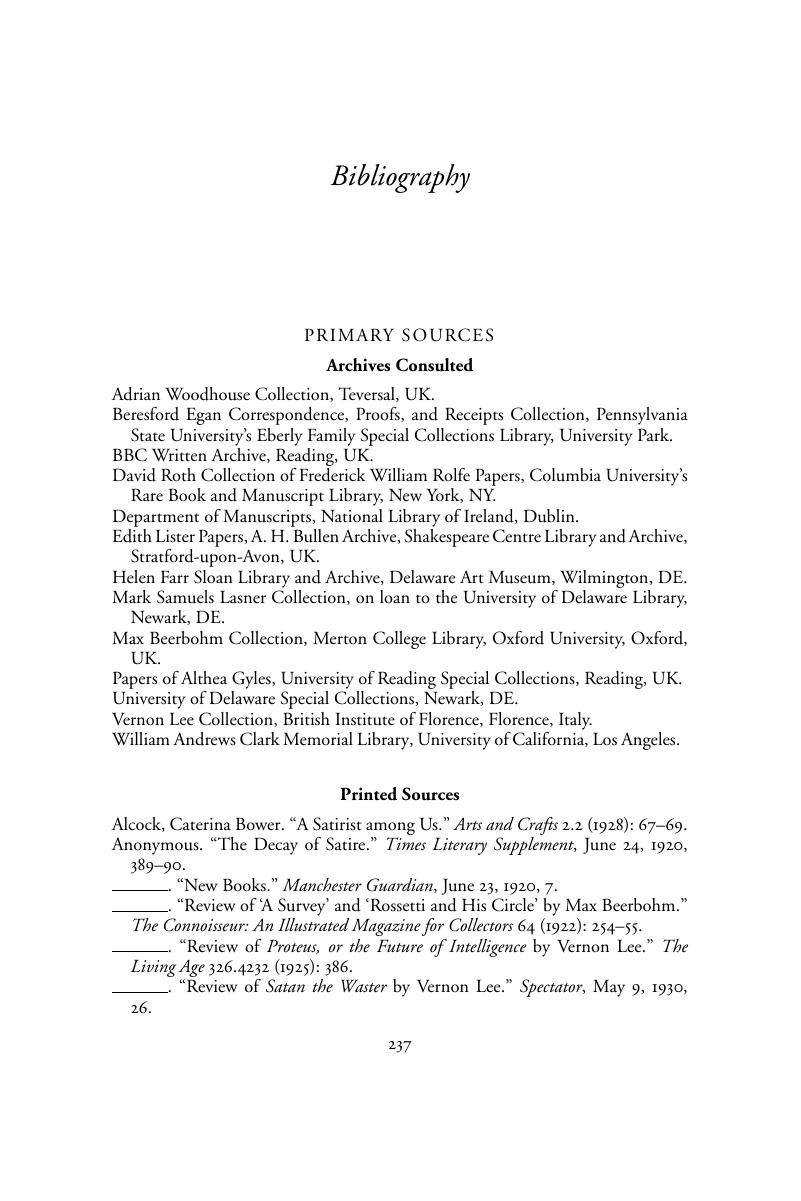Book contents
- Literature and the Politics of Post-Victorian Decadence
- Literature and the Politics of Post-Victorian Decadence
- Copyright page
- Contents
- List of Illustrations
- Book part
- Introduction
- Chapter 1 “Queer Indifference”
- Chapter 2 Pacifism and Post-Victorian Decadence
- Chapter 3 “Towards Aristocracy”
- Chapter 4 Irish Decadence, Occultism, and Sacrificial Myth
- Chapter 5 Crusading Decadent
- Afterword
- Notes
- Bibliography
- Index
- References
Bibliography
Published online by Cambridge University Press: 05 June 2015
- Literature and the Politics of Post-Victorian Decadence
- Literature and the Politics of Post-Victorian Decadence
- Copyright page
- Contents
- List of Illustrations
- Book part
- Introduction
- Chapter 1 “Queer Indifference”
- Chapter 2 Pacifism and Post-Victorian Decadence
- Chapter 3 “Towards Aristocracy”
- Chapter 4 Irish Decadence, Occultism, and Sacrificial Myth
- Chapter 5 Crusading Decadent
- Afterword
- Notes
- Bibliography
- Index
- References
Summary

- Type
- Chapter
- Information
- Literature and the Politics of Post-Victorian Decadence , pp. 237 - 252Publisher: Cambridge University PressPrint publication year: 2015



